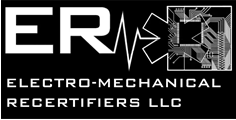Release Date: April 16, 2012
Release Number: 4057-057
FRANKFORT, Ky. — Just as every home should have a smoke alarm, every home should have an emergency supply kit packed and ready. Being prepared doesn’t have to cost a lot of money.
“Although Federal, Commonwealth and local governments are ready to assist the public during times of emergencies and disasters, you should be prepared to take care of yourself and members of your family for the first 72 hours – that’s three days – following a disaster such as a tornado or an ice storm,” said Kentucky Emergency Management Director John W. Heltzel. “A big part of disaster preparation is knowledge and FEMA has developed a comprehensive guide to help folks prepare.”
FEMA’s disaster preparedness website, www.ready.gov, is a destination site for information about getting your family prepared for a disaster.
“Emergency preparedness is a matter of priorities,” said Libby Turner, FEMA federal coordinating officer for the Kentucky recovery effort. “A family preparedness kit is one of the most important tools at your disposal to keep your family safe in a disaster.”
Commercially available disaster kits can range from $75 to $300 and up, but most of the pieces of a disaster kit are already in the home and just need to be gathered together and stored in one place.
An emergency preparedness kit needs to include food and water for each member of the family for three days, a battery-powered or hand-crank radio, flashlight, spare batteries, first aid kit, non-electric can opener, local maps and personal sanitation items such as hand sanitizer, moist towelettes, toilet paper, garbage bags and plastic ties.
It is important your kit includes important family papers such as wills or property deeds and personal identification and any prescription medicines a family member may be taking.
Other items to consider include sleeping bags or blankets, paper towels, books, puzzles and games for children, pet food and medications for family pets.
It’s helpful to have cash in case banks are closed and there is no power for ATMs.
Remember, many shelters will not accept pets, so make sure you have a plan that protects all your family members.
The emergency supplies can be stored in an easy-to-carry plastic storage container or duffel bag, making them easy to grab and go when an emergency forces people to leave their home.
Disaster recovery assistance is available without regard to race, color, religion, nationality, sex, age, disability, English proficiency or economic status. If you or someone you know has been discriminated against, call FEMA toll-free at 800-621-FEMA (3362). For TTY call 800-462-7585.
The social media links provided are for reference only. FEMA does not endorse any non-government websites, companies or applications.
FEMA’s temporary housing assistance and grants for public transportation expenses, medical and dental expenses, and funeral and burial expenses do not require individuals to apply for an SBA loan. However, applicants who receive SBA loan applications must submit them to SBA loan officers to be eligible for assistance that covers personal property, vehicle repair or replacement, and moving and storage expenses.
FEMA’s mission is to support our citizens and first responders to ensure that as a nation we work together to build, sustain, and improve our capability to prepare for, protect against, respond to, recover from, and mitigate all hazards.

Recent Comments